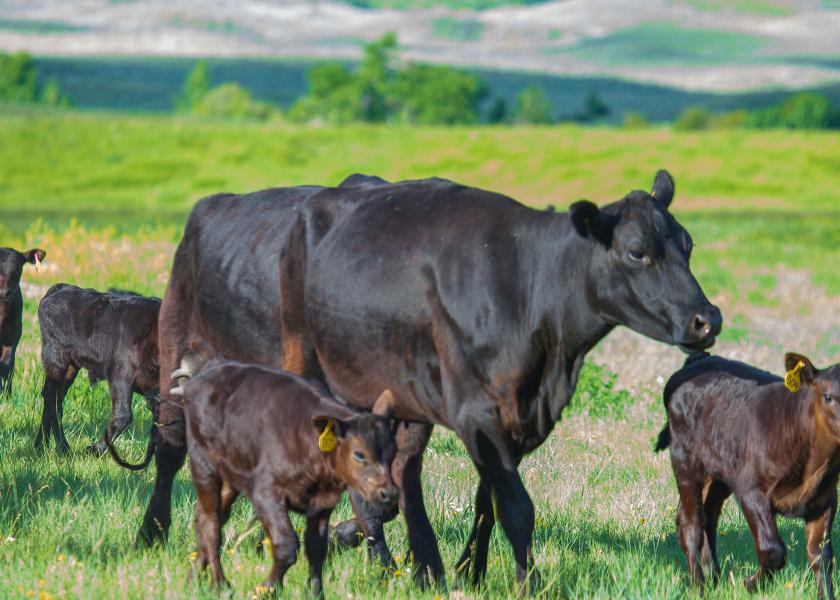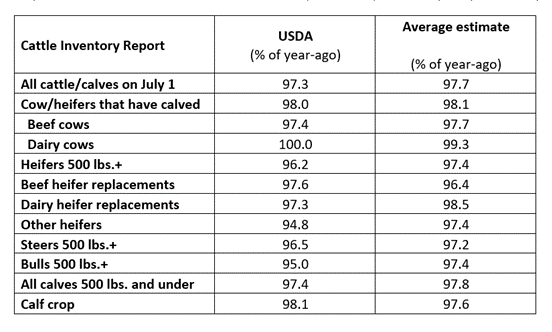Cash Cattle Higher as Herd Continues to Shrink

Packers and cattle feeders spent the week in a standoff with moderate trades in both the North and South occurring mostly on Friday. National Agricultural Statistics Service’s dual July reports were bullish as expected, suggesting a 3% decline in cattle inventories and a 2% decline in cattle on feed inventories.
Cash trade in the North was at $188 live and $295 dressed, $2 higher on the live and $5 higher dressed compared to the previous week. Cattle traded in the South at $180 per cwt., $2 higher. Feeder cattle traded in light volumes mostly steady to $6 higher; calves traded mixed at $2 loer to $2 higher.
Wholesale beef prices continued trending lower. Friday’s Choice boxed beef closed at $302.74 per cwt., down $3.20 for the week. Select boxed beef closed Friday at $274.71 per cwt., down $1.90 per cwt. for the week.
Traders anticipating a summer decline in fed cattle prices actively sold live cattle futures again today. Nearby August cattle slid 30 cents to $180.025, while August feeder futures rallied 82.5 cents to $245.925. Those closing prices represented weekly losses of 15 cents and 72.5 cents, respectively.
Cattle on Feed
Traders expected Friday’s Cattle on Feed report to state the July 1 large-lot feedyard population at 97.7% of the comparable year-ago level. That reflected anticipation of June placements 1.6% under year-ago, while marketings were seen falling well short (4.9%) of last year. The USDA stated the July 1 population at 11.204 milllion head, down 1.8% from last year, so the report holds negative implications for Monday’s opening. Last month’s feedlot placements easily topped expectations by increasing 44,000 head (2.7%) over year-ago. June marketings matched expectations for an approximate 5% annual drop, which both of those results looking negative for Monday’s opening.
Cattle Inventory
USDA estimated the U.S. cattle herd as of July 1 at 95.9 million head, down 2.7 million head (2.7%) from last year and 628,000 head less than the average pre-report estimate implied. That was a record low for the U.S. cattle herd dating back to the start of USDA’s data in 1990. Total cows and heifers calved stood at 38.8 million head, down 800,000 head (2.0%). All of that reduction was in beef cows, which fell to 29.4 million head. Dairy cows and heifers calved was unchanged at 9.4 million head. The 2023 calf crop is estimated at record low 33.8 million head, down 665,000 head (1.9%) from last year.
The smaller beef cow inventory along with a 100,000 head (2.4%) decline in beef replacement heifers signals the beef herd will continue to shrink.








